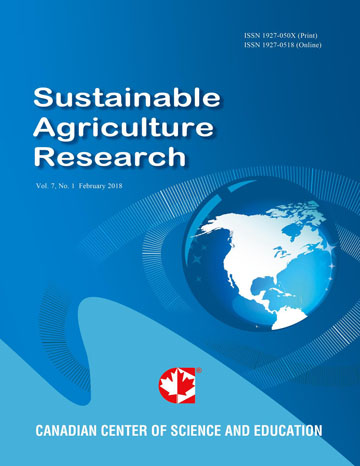Morphological Characterization of Mulberry (Morus spp.) Accessions Grown in Kenya
- Nderitu Peris
- Kinyua Gacheri
- Mutui Theophillus
- Ngode Lucas
Abstract
Genetic divergence of five mulberry accessions including Embu, Thika, Thailand (M. alba), Kanva-2 and S41 (M. indica) grown in Kenya were examined using twelve phenotypic traits. The assessment of phenotypic traits was done in a field study in two localities, Nairobi and Eldoret. The traits that were significantly different across the mulberry accessions included lamina width and petiole length (P ? 0.01), petiole width and growth height (P ? 0.05), internodes distance and number of branches (P ? 0.001). The Duncan’s Multiple Range Test (DMRT) results were used to generate a dendrogram derived from hierarchical cluster analysis that further partitioned the mulberry accessions into four groups. Embu and Thailand accessions grouped together while S41, Thika and Kanva-2 accessions grouped separately. Embu and Thailand accessions were characterized by fewer numbers of branches than the rest of the accessions. Thika accession had high number of branches and short internode distance. Significant and positive correlations were found between leaf yield traits except in internode distance and number of branches which were significant and negatively correlated. Significant and positive correlations can be utilized since they are rewarding for mulberry leaf yield improvement.
- Full Text:
 PDF
PDF
- DOI:10.5539/sar.v3n1p10
Index
Contact
- Joan LeeEditorial Assistant
- sar@ccsenet.org
